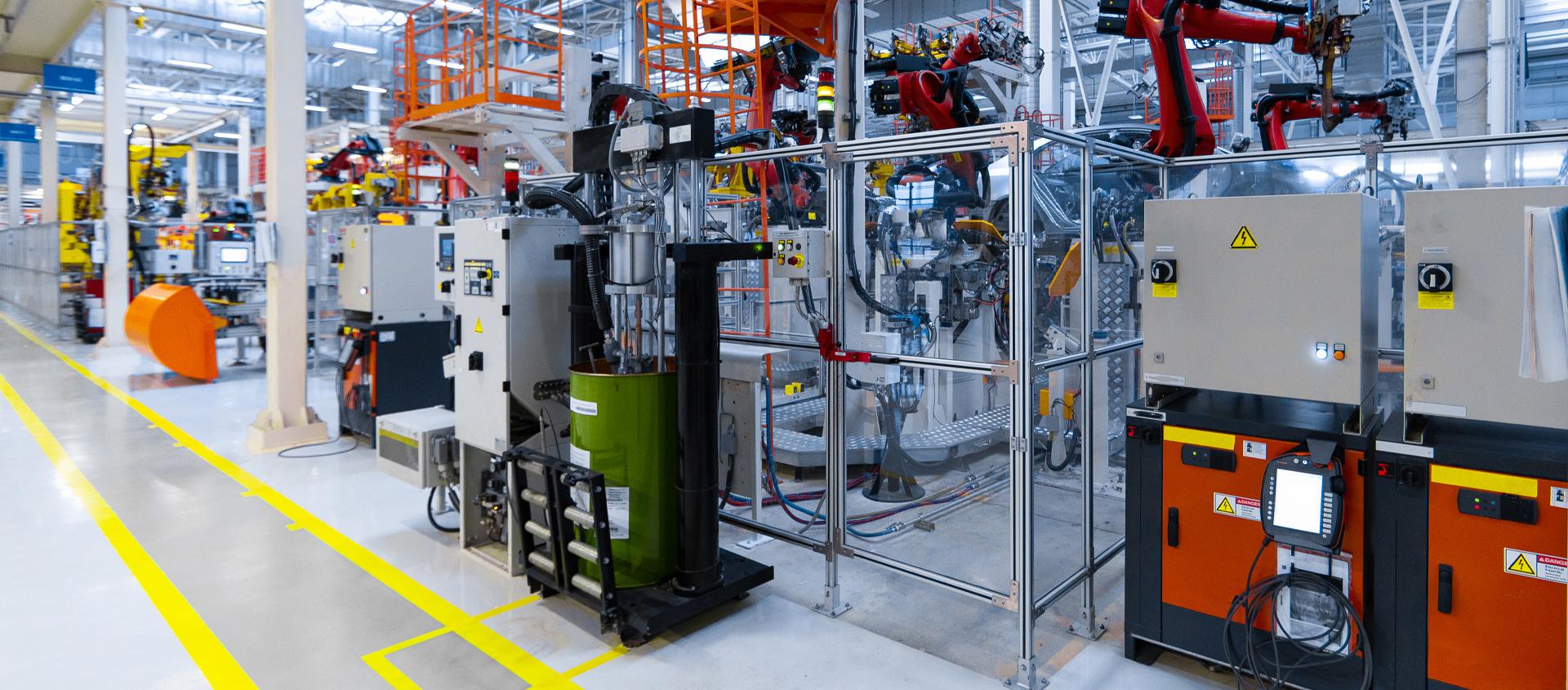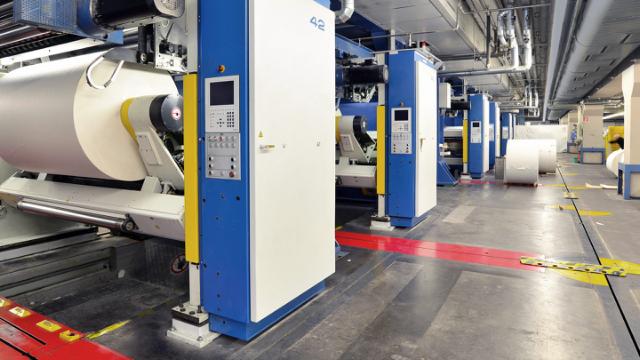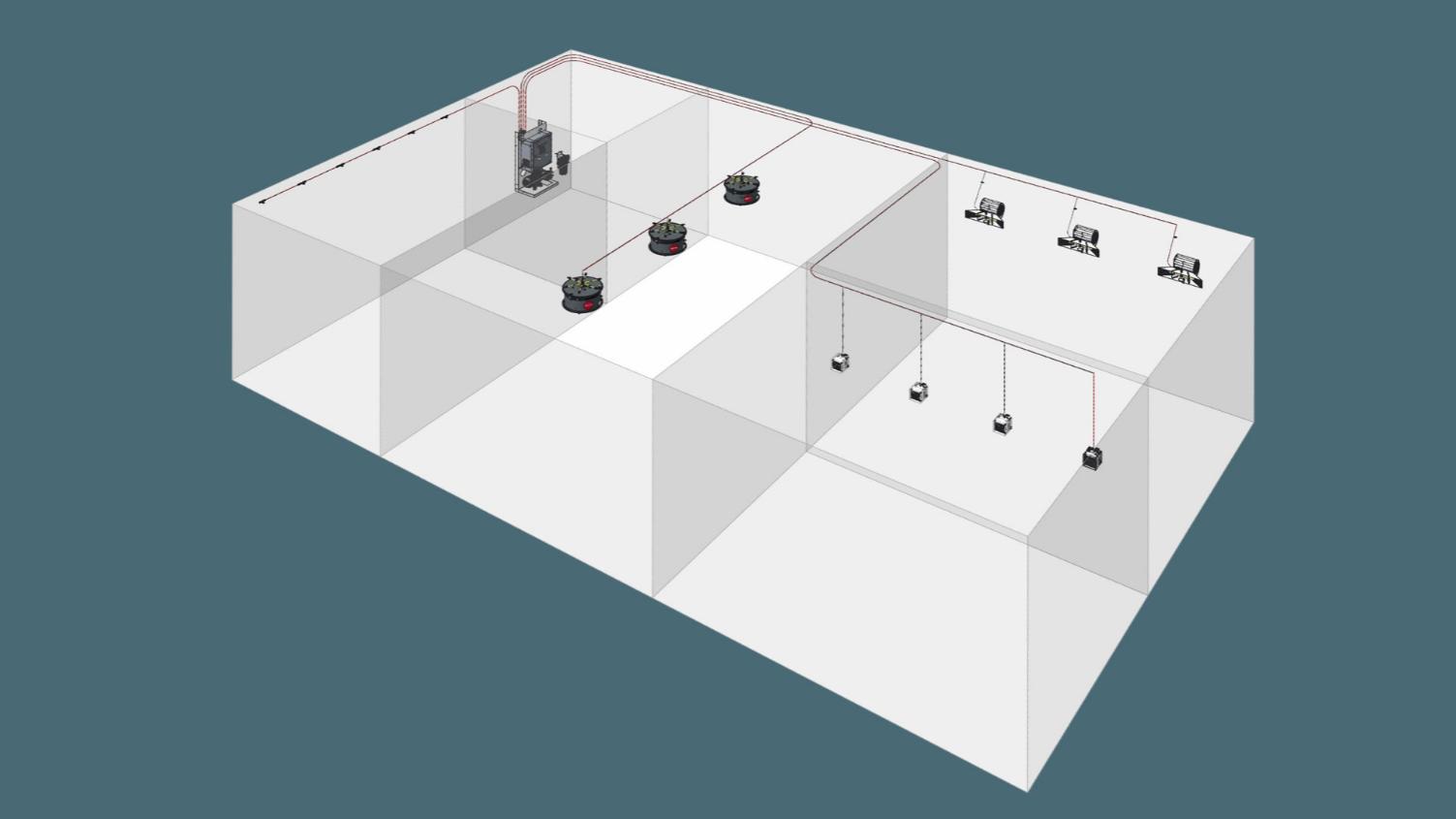
In-room Solutions
In-room systems are typically used in production facilities such as printing houses, electronics manufacturing or other production areas with heat-producing machinery.
In-room systems can:
- reduce excess heat by adiabatic evaporation
- protect against electrostatic discharge (ESD) by controlling the humidity of the air
- reduce the risk of product desiccation and undesired dehydration
- help alleviate the presence of airborne dust which can threaten production equipment, product quality and the health of people working in the facility


An in-room air humidifying system distributes water mist to different sectors within a production or storage facilities. This illustration shows how some atomizers and nozzles are precisely targeted at a heat or dust source while others deliver humidity to the room entire room or sector.

3D diagram showing a typical installation. From the controlling system components, water is distributed to various zones - here shown using different kinds of vaporizers and atomizers.
System fundamentals
An in-room air humidifying system consists of a water processing unit or units and a controller (HydroSens™) connected to sensors in the production facility itself.
The controller and the pump supply water at 50 bars pressure to nozzles or atomizers in the production facility, producing a finely atomized water mist which rapidly evaporates to the air.
The pump output is controlled by a frequency inverter and a pressure gauge. The combination provides a flexible flow from 1 to 100%. There is no unnecessary heating or by-passing water.
Features
- Low power consumption (from 2.1 watt per liter of water)
- Capacity from 12 to 1200 l/h
- Modulating volume-controlled water flow (PID)
- Ethernet/Modbus standard
- Hygienic design
- 1 to 10 zones humidity control for high flexibility